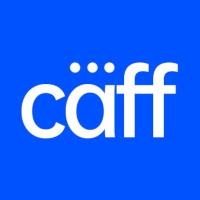Web3 Morning News is an official Web3Caff newsletter focused on the Web3.0 sector. It features a selection of important news, official updates, and excellent articles from the past 24 hours. It aims to help Web3.0 enthusiasts and builders quickly understand the latest industry trends. For more comprehensive and timely updates on the latest industry trends and exciting articles, please also follow us on Twitter.
Cover: Bastion
- Cardano releases new phase roadmap

- Hong Kong Monetary Authority: Currently no offshore RMB stablecoin is issued in Hong Kong

- Vitalik: Fusaka upgrade will solve data availability issues

- Australia releases draft bill on digital asset regulation

- Gate launches high-performance L2 network Gate Layer

- APRO Launches AI-Enhanced RWA Oracle

- Bankr to Launch Protocol Security Reserve

- Tempo announces first infrastructure partners

- Stablecoin startup Bastion completes $14.6 million in funding , led by Coinbase

- Solana Ecosystem Perpetual Contract DEX BULK Completes $8 Million Seed Round , Led by 6th Man Ventures and Robot Ventures

- SuperImage, a decentralized AI image generation and editing platform, announced the completion of a $5 million strategic financing round led by Genesis Block Capital.

You may have missed some great articles
The official launch of the Digital RMB International Operations Center and the simultaneous launch of three platforms signal mainland China's commitment to building an institutionalized clearing foundation for "payment-as-settlement, auditable vouchers." Meanwhile, Hong Kong, China, released a roadmap for the development of its fixed income and money markets, aiming to establish a compliant market front end through primary issuance, secondary liquidity, and next-generation infrastructure. By connecting the foundation with the market, on-chain fixed income is expected to move from "demonstrable" to "operational," bringing institutional benefits such as duration compression, credit reduction, and information symmetry. This issue of Web3Caff Research's "Market Trends Insights" will analyze the logical starting point, market-oriented evolutionary path, and potential risks of cross-strait institutional coordination, and explore whether fixed income can be the first asset class to achieve large-scale on-chain implementation.
This article includes a comparison chart of the digital RMB’s cross-border settlement mechanism and the Hong Kong version of the fixed income market route to help you quickly understand the underlying logic and evolutionary rhythm of the cross-strait institutional linkage.
Fintech 1.0 was the initial digitization of the financial industry in the 1990s, driven by companies like PayPal. Fintech 2.0, which took place over the past decade, centered on building application programming interfaces (APIs) on top of the existing financial system. Now, we are entering the Fintech 3.0 era, which will reshape the financial system with code, as this article explains.
Web3 aims to reduce reliance on intermediaries, thereby lowering service fees and giving users greater control over their data and assets. However, while the idea of lowering costs for users is appealing, establishing reasonable fees and pricing standards requires platforms to strike a balance between the interests of multiple stakeholders. This article explores this topic for you. Read it now.
Disclaimer: As a blockchain information platform, the articles published on this site solely reflect the personal views of the authors and guests and do not represent the position of Web3Caff. The information within these articles is for reference only and does not constitute any investment advice or offer. Please comply with the relevant laws and regulations of your country or region.
Welcome to join the Web3Caff official community : X (Twitter) account | Web3Caff Research X (Twitter) account | WeChat reader group | WeChat public account







